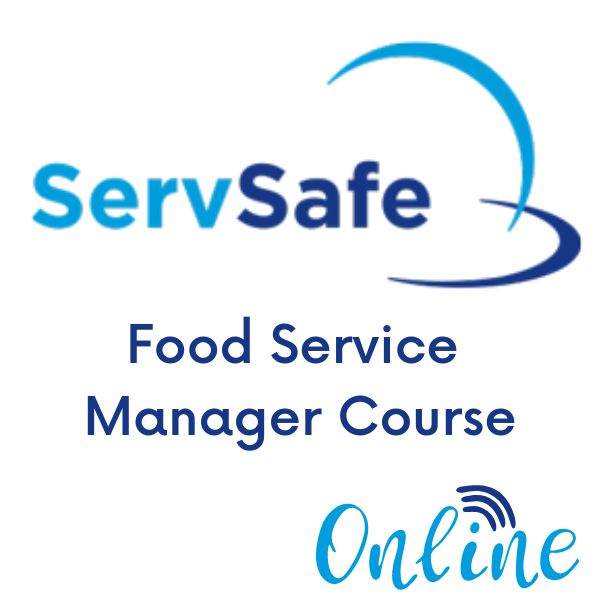Quick Tips for Successfully Finishing Your ServSafe Food Handler Training Course Online
Quick Tips for Successfully Finishing Your ServSafe Food Handler Training Course Online
Blog Article
Comprehensive Food Handlers Educating for Health and Safety And Security
In today's swiftly developing food solution landscape, detailed food handlers training has actually arised as a vital component for guaranteeing hygiene and safety and security. By instilling essential practices associated with hand health, food storage space, and hygiene, this training not just minimizes the threat of foodborne health problems yet also enhances compliance with governing standards. The effects of such training extend past mere conformity; they discuss public health and wellness and consumer trust. Yet, the effectiveness of these training programs can differ significantly. What factors truly identify their success in fostering a culture of safety and security?
Value of Food Safety Training

In addition, food safety and security training helps to make certain that employees understand current guidelines and standards, which are necessary for preserving functional licenses and preventing expensive fines. Routine training sessions likewise act as a system for enhancing finest techniques, therefore minimizing the chance of human mistake, which usually offers as a leading reason for food contamination.
In addition, buying food security training can enhance an establishment's credibility, as consumers progressively prioritize eating experiences that reflect high security requirements. Such proactive actions not just shield consumers yet likewise add to the lasting success of food services. In recap, thorough food security training is a crucial component of food solution procedures, directly affecting both public wellness and organization sustainability.
Key Principles of Hygiene
Keeping high criteria of health is vital in any type of food handling environment to avoid contamination and make sure the safety and security of consumers. The crucial concepts of hygiene encompass several important techniques that food trainers should continually use.
First, hand hygiene is extremely important; food handlers need to wash their hands thoroughly with soap and water prior to and after handling food, in addition to after utilizing the restroom or touching any type of possibly contaminated surfaces. Secondly, tools and surface areas need to be consistently cleaned up and sterilized to remove microorganisms. This includes utensils, cutting boards, and kitchen counters, which need to be maintained in a tidy condition.


Proper food storage is additionally vital; raw foods ought to be stored separately from prepared or ready-to-eat items to avoid cross-contamination. servsafe certifications. In addition, preserving proper temperature controls is important; subject to spoiling things must be maintained safe temperature levels to hinder microbial development
Finally, individual hygiene can not be forgotten. Food handlers ought to wear clean garments, use hair restrictions, and prevent functioning when ill. By sticking to these crucial concepts of hygiene, food handlers can dramatically reduce the danger of foodborne ailments and advertise a more secure dining experience for all customers.
Typical Foodborne Diseases
Although lots of foodborne ailments can be stopped through appropriate health and secure food dealing with techniques, they stay a significant public health and wellness issue. Foodborne microorganisms can bring about a selection of health problems, varying from light stomach distress to serious complications and even death.
Common foodborne ailments consist of salmonellosis, brought on by Salmonella microorganisms, usually linked to undercooked fowl and eggs. An additional common ailment is listeriosis, linked with raw dairy items and ready-to-eat meats, which can be particularly hazardous for immunocompromised people and expecting females. Norovirus, frequently gotten from polluted food or surface areas, is known for its quick spread and ability to trigger outbreaks in communal setups.
Escherichia coli (E. coli) infection, notably linked with undercooked hamburger and contaminated produce, can result in serious stomach aches and kidney failing in many cases. Furthermore, Clostridium perfringens, frequently discovered in large quantities of food that are incorrectly kept, can trigger gastrointestinal disorder with symptoms appearing quickly after intake.
Comprehending these illnesses is crucial for food trainers, as recognition can considerably minimize the danger of contamination and safeguard public health and wellness. Correct education and learning you can try this out and training are important components in combating foodborne conditions.
Finest Practices for Food Handling
Efficient food managing practices are important in protecting against the spread of foodborne illnesses. Correct hand hygiene is crucial; food trainers have to clean their hands extensively with soap and water before and after dealing with food, especially raw meat or poultry. This simple activity considerably lowers the risk of cross-contamination
Second of all, preserving appropriate food storage temperatures is vital. Perishable products must be saved at or listed below 40 ° F(4 ° C) to inhibit microbial growth. Furthermore, cooked foods must be maintained above 140 ° F(60 ° C) until served.
Finally, making sure cleanliness of surfaces and equipment is critical. On a regular basis sterilize counter tops, reducing boards, and utensils, especially after preparing raw foods. Usage different cutting boards for ready-to-eat and raw foods to better decrease contamination dangers.
In addition, when preparing food, it is vital to comply with the concept of "initial in, initially out" (FIFO) to handle inventory efficiently and decrease perishing. Lastly, always adhere and check out to food tags for secure cooking temperature levels and handling instructions. By applying these best methods, food handlers can substantially boost food safety and protect public health.
Implementing a Safety Society
Developing a security culture within a food handling environment is essential for promoting a dedication to food safety and security amongst all team directory member. This culture emphasizes the significance of food safety and security as a common duty, encouraging employees to prioritize hygiene techniques continually.
To apply a safety culture, companies ought to begin by providing detailed training that resolves food handling methods, possible threats, and the relevance of individual hygiene. Training sessions must be interactive and tailored to the specific roles of staff members, making certain relevance and interaction.
Additionally, leadership plays an essential duty in developing this culture. Administration must design risk-free methods and connect the value of food safety and security consistently. Acknowledging and compensating staff members that support security criteria can additionally reinforce these behaviors.
Furthermore, open interaction networks need to be developed, allowing team to report security problems without anxiety of effect. Normal security audits and responses sessions can assist recognize areas for enhancement and enhance liability.
Inevitably, cultivating a safety culture not only boosts compliance with food safety policies yet likewise shields public health, cultivates staff member spirits, and adds to the general success of the food handling establishment.
Verdict
In final thought, detailed food handlers training plays a critical duty in promoting health and safety and security within food solution establishments. By equipping employees with vital knowledge concerning food safety and security principles, usual foodborne diseases, and ideal practices for handling food, such training significantly minimizes health and wellness dangers. In addition, promoting a culture of security improves the establishment's reputation and aligns with consumer assumptions for high safety criteria, eventually contributing to public wellness protection and the general success of the food solution market.
In today's swiftly developing food solution landscape, thorough food trainers training has actually emerged as an important part for ensuring hygiene and safety and security.Food security training is critical for maintaining high requirements in food handling and preparation, description with research studies suggesting that correct training can decrease foodborne diseases by up to 30%. In recap, comprehensive food safety training is an important component of food service procedures, straight impacting both public health and service sustainability.

Report this page